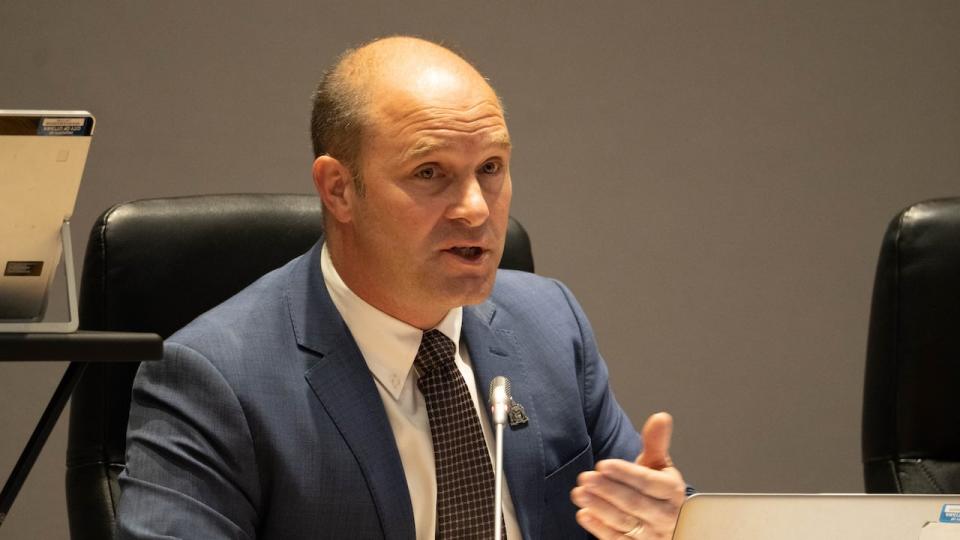City plans 'sprung structures' for up to 300 refugees, asylum seekers
The City of Ottawa is hoping for a quick response on its funding application for a newcomer reception centre, which it now says will include two tent-like structures capable of sheltering up to 300 people.
The city submitted a request to the federal government for $32.6 million to fund the facility, known as a "welcome and stabilizing centre." It would offer shelter, wrap-around supports and transitional housing for refugees and asylum seekers.
Kale Brown, the city's manager of homelessness programs and shelters, said he's expecting an answer within about a month.
He said it's desperately needed as the city starts preparing for another surge in winter shelter demand.
"It needs to be done immediately to deal with the anticipated demand," Brown said. "It's hard to exactly model, but it could be very high."
Influx of asylum seekers 'not a blip'
Clara Freire, the city's general manager of community and social services, said it's now clear that the influx of asylum seekers that has overwhelmed Ottawa's shelter system is "not a blip."
"This is now a reality of our city and other cities across the country," she said. "Global migration has now hit locally ... so our systems need to shift and change."
Newcomers to Canada made up about 10 to 15 per cent of the single adult shelter population before the pandemic. Now, that number is above 63 per cent.
The trend shows no sign of abating, according to Freire, who cited conversations with officials at Immigration, Refugees and Citizenship Canada.
"They confirmed that they don't expect any difference in trending around global migration and the type of migration we're seeing," she said.
'If you're new to Canada you're going to live in a tent'
Brown said the welcome and stabilizing centre would include two temporary facilities called "sprung structures" with 150 beds each. They'd be set up to accommodate people for up to 90 days. After that, they could move to transitional housing, which would be located off site with space for 120 people.
The idea faced pushback from Barrhaven West Coun. David Hill, who previously served in the Canadian Armed Forces.
"I am concerned when I hear the term sprung shelter, and I just say that having in my previous career worked in refugee camps and I've seen temporaries become permanents," he said. "I am concerned if our concept is to build kind of a two-tiered support system where if you're new to Canada you're going to live in a tent."

He called it "encampment-like" and instead urged staff to consider modular mass timber structures, which he said would offer more dignity.
Brown said the city studied eight rapid-construction options but settled on sprung structures as the quickest possible solution. He said the sprung structures would allow for partitions, essentially offering everyone their own room.
He said that's a major improvement from the city's current stopgap solution of sheltering people in city arenas and gyms.
"It's much more dignified than what we're currently able to offer in community centres," said Brown.
Community services committee chair Coun. Laura Dudas said she was pleased to hear that staff have a plan for the influx of newcomers, though she said it wasn't the "optimal" solution.
"I don't think any of us wish to have people in a tent or in a sprung structure," she said, reminding her colleagues that another winter is approaching.
"We need to make sure no one is sleeping rough when that comes about, and I am strongly confident that staff are looking at every single option."


